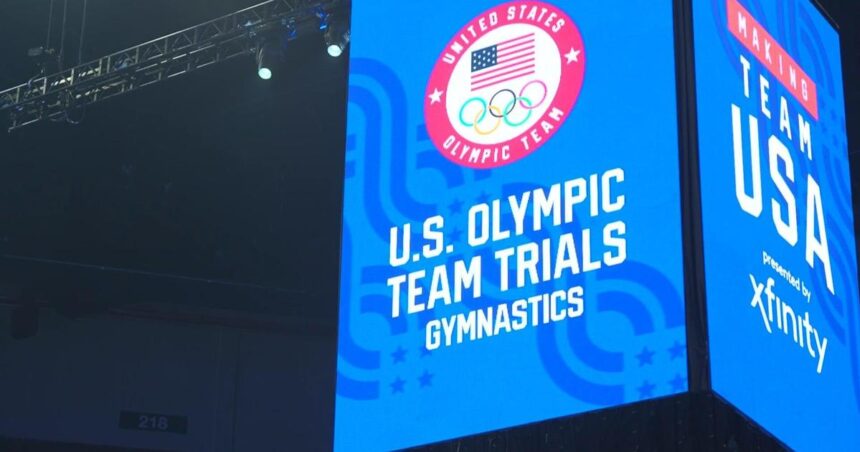MINNEAPOLIS — USA Gymnastics was a house afire five years ago, the massive fallout surrounding the Larry Nassar sexual abuse scandal rendering one of the U.S. Olympic movement’s marquee programs radioactive.
Lawsuits. Bankruptcy. Potential decertification. A revolving door at the top as CEOs incapable or unwilling to find a path forward came and went. Sponsorships vanished.
And perhaps most damaging of all: the erosion of trust between the organization and its tens of thousands of members, from the men and women competing at this week’s Olympic trials to club owners to coaches to the parents of kids just starting out.
Before Li Li Leung took the job as president and CEO of the flailing national governing body in early 2019, the former Michigan gymnast turned NBA executive asked a longtime mentor for guidance.
“He said to me ‘You have the opportunity to be a part of potentially the greatest turnaround in sporting history, how can you not take it?’” Leung told The Associated Press. “And I’m like, ‘That’s pretty compelling.'”
People are also reading…
Five-plus years after taking over, things are improving. Not perfect — fitting for a sport where perfection is essentially unattainable — but better. Legally, fiscally and Leung believes, culturally.
A packed Target Center will be awash this weekend with the logos of blue-blood corporate partners that fled in the wake of the Nassar revelations. Underneath the rebranded USA Gymnastics logo, athletes eyeing a spot in Paris will compete in an environment they believe is in a far healthier place than it was between the 2016 and 2020 Olympics.
Few have watched this methodical evolution unfold more closely than seven-time Olympic medalist Simone Biles. The 27-year-old superstar publicly identified herself as a Nassar victim in early 2018 and has never shied away from taking those in power to task. Asked recently where her relationship with USA Gymnastics stands as she aims for a third trip to the Games, Biles strikes a more conciliatory tone.
“I think it’s changed because a lot of the people in there have changed,” she said. “They have stepped up to the role. They’ve done the work. They put in the work.”
People are also reading…
Support dogs are greeted by athletes during the U.S. Gymnastics Championships on June 2 in Fort Worth, Texas. USA Gymnastics makes therapy dogs a staple at major events to help gymnasts relax, they’ve also been a hit with coaches and judges, lowering anxiety levels all around.
Running into a ‘burning building’
Leung wants to get something straight. She didn’t intend to hire an executive leadership team comprised entirely of women — from Chief Operating Officer to the organization’s first-ever Chief of Athlete Wellness on down — to mirror the makeup of an organization whose membership is 85% female. It just sort of happened.
There were specific qualities Leung was looking for as she tried to put together a group that could help lead USA Gymnastics out of the wilderness, and one she was trying to avoid.
“They couldn’t possess any ego at all,” Leung said. “I knew in order for us to do what we had to do … they had to realize it wasn’t about them as an individual, but it was about the wider mission, the wider purpose of what we’re trying to achieve.”
Enter people like Stefanie Korepin. A former member of the U.S. rhythmic gymnastics national team in the late 1990s and early 2000s, Korepin admits she “wanted nothing to do with” the sport when she retired.
Korepin earned her MBA and went into the corporate world before realizing the sport was in her blood. She began moonlighting as a judge before eventually becoming an interim board member in 2018, a decision that eventually led Korepin to her current role as chief program director.
… (continues)





